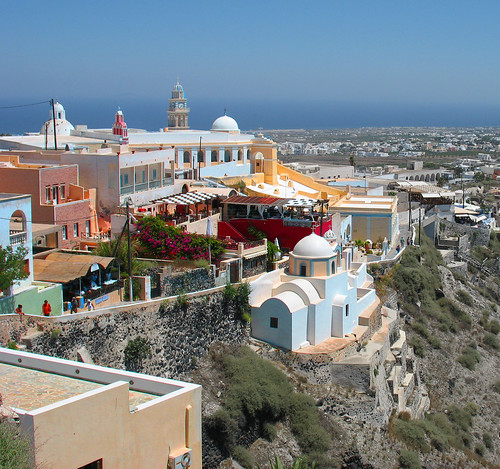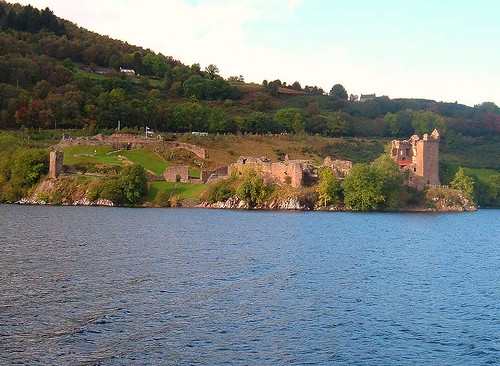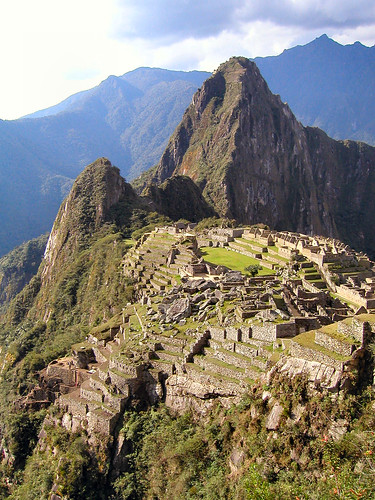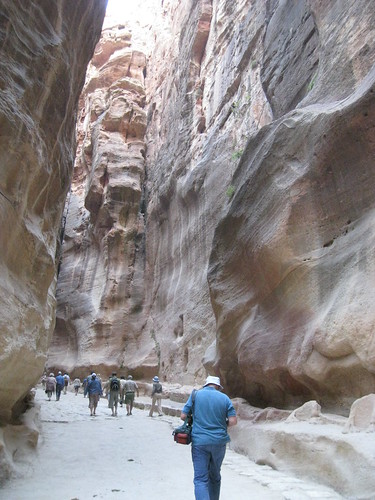Travel and see the world creates a special feeling in everyone. But there are places that have the characteristic of special feelings arouse more than others, either by his greatness, his majesty or rarity, the fruit of human or natural creation.

Photography by Rennett Stowe
It is those «special places» of the world, conveying great power to inspire travelers and their amazement, shock and awe. So today is a list of ten «places that have a meaning or significance either by their own stories, the mysteries that surround them or simply because they are sites of unique beauty and unique».
1 – Santorini Island – Greece
Known for its white houses and blue roofs, which rise in the middle of the Aegean Sea. This is an absolutely different from all the Cyclades islands. Its geological setting gives you that unique wild beauty.
Santorini took its current form by sinking the caldera of an enormous volcano. Its capital is the town of Thira and its main port on the acini. Their spectacular beauties, with a lively nightlife, have become major tourist destinations in Europe.
2 – Easter Island, Chile:
Located in Polynesia, in the middle of the Pacific Ocean. It has an area of 163.6 km ² and a population of 3,791 inhabitants. But it is known worldwide for hundreds of gigantic statues, some erected on stone platforms, others buried or broken on the ground that dominate its skyline.
His name is because the Europeans discovered it on Easter Day 1722. Both legends of the islanders as the studies are insufficient to identify the builders of these magnificent statues. At most one can say that these buildings have a certain affinity with those of Peru, although there are other elements of Peruvian culture that were unknown on the island.
3 – Bimini – Bahamas:
It is an underwater rock formation near North Bimini Island in the Bahamas.
The rocks that make up the wall of the «Bimini Road» is basically limestone blocks of varying sizes, usually rectangular, arranged in more or less irregular depending on the size, but very conspicuously aligned according to their edges and in the pattern of » route, «which suggests an origin» unnatural».
Although geologists speculate that the half-mile path of Bimini is a natural, many are also awarded to the set of blocks as part of a wall, a wharf, platform or simply a path. Many people believe they were man-made, possibly a way for the lost city of Atlantis.
4. Loch Ness – Scotland
Undoubtedly, the thought of Scotland, no one takes to bring to mind the legend of Loch Ness, according to which is housed inside a monster. And nothing bad has gone to the region using this reckless creature hidden. It happens that his alleged presence, annually attracts lots of tourists. Although he never could prove anything, there are many people who claim to have sighted Nessie.
Most scientists and other experts say the evidence supporting the existence of Nessie is not convincing, and regard such reports as misidentifications of fraud or real creatures. But that does not discourage the curious. Boats depart from various points along the coast providing tourists the chance to look at the monster. Loch Ness is part of a series of interconnected lakes in Scotland that were carved by glaciers during previous ice ages.
Its waters have exceptionally low visibility due to high content in peat from the surrounding soil. It is the second largest lake in Scotland by surface area, with about 56.4 km2, but due to its great depth is the largest in volume: it contains more fresh water than all the lakes in England and Wales together.

Photography by conner395
5 – The Pyramid of the Sun and the Moon-Mexico:
Pre-Columbian ruins in the city of Teotihuacan, just fifty miles north of Mexico City. The Pyramid of the Sun is the pre-Hispanic larger building of his era (100-650 AD) and is one of the largest in Mesoamerica. Its name is because, since the sixteenth century, the chronicles mention that this great monument was dedicated to that divinity. Meanwhile, the tunnels can be seen in the sides have been made by various researchers in order to know its history and construction system.
As part of popular folklore, is said to be at the top, standing in the center of the platform, if you make a wish, it will surely be fulfilled. It is also the place to get «cosmic energy» and even some parents bring their children in their arms to the top for presentation to the cosmos. Meanwhile, the Pyramid of the Moon is in the northern part of Teotihuacan and its outline is modeled after the Cerro Gordo, Tenan called in Nahuatl, meaning «mother or protective stone.» It is the largest building in the city after the Pyramid of the Sun and covers an earlier structure.
6. Pyramids and Sphinx of Egypt:
Only look at the Egyptian pyramids and the Sphinx to many knees tremble. It seems incredible that this scale works were built thousands of years ago. And even more surprised that they have survived the passage of time to become the most portentous and emblematic monuments that today speak of that ancient civilization.
This site is considered by many as the most enigmatic and mysterious world. Stand the three great pyramids of Giza (tomb of the pharaohs Khufu, Khafre and Menkaure), which dates back to the vast majority of scholars, the period known as the Old Kingdom of Egypt. Furthermore, as Rankeen.com bend, the Great Pyramid of Giza, built by Cheops (Khufu) is one of the Seven Wonders of the World.
The oldest of the three, also known as the Great Pyramid is estimated that it was built approximately 4,400 years. At that time not yet known techniques as important as the pulley. So striking how they managed to 30,000 kilos stones erected to a height of 150 meters. Were used for its construction more than two and a half million blocks carried by 100,000 men during the 20 years of the work.
No less mysterious is the Sphinx, which is known to have a secret chamber beneath one of his legs and, according to some experts, it also contains a passage into the Great Pyramid. The Great Sphinx of Giza is the king with the strength of a lion and human intelligence. It was the first time this statue was used as a guardian of the royal tomb, next to the main streets that served to supply the necessary materials for the construction of the funerary complex.
It measures 73 meters long by 20 high and 14 high. It made an enormous advantage limestone ledge in the place, though he added blocks of stone for the face of Pharaoh and elsewhere. «Without doubt they are faced with the impression of being in the presence of monuments that are in her womb transcendental secrets very closely related structures,» says the site rankings.
7. Machu Picchu – Peru:
A few days ago the world celebrated 100 years of the rediscovery of the ruins of Machu Picchu, a spectacular city that reveals the greatness of Indian culture and achievement every year hundreds of thousands of tourists who visit Peru. This extraordinary settlement lies halfway up the Andes Plateau, in the middle of the Amazon jungle and above the Urubamba River. It was abandoned by the Incas because of a smallpox outbreak and, after the Spanish defeated this empire, the city remained «forgotten» for three centuries until it was rediscovered by Hiram Bingham in 1911.
Machu Picchu would have been one of the vacation homes of Pachacutec (1438-1470). However, some of his best buildings and the ceremonial demonstrate clearly that it was used also as a religious shrine. Recent studies based on archival documents of the sixteenth century have provided good and new arguments to determine that the citadel of Machu Picchu, the pyramids of the pharaohs of Egypt or the tomb of Chinese Emperor Shi Huang Chi, a luxurious well-kept tomb to receive the remains of King Pachacutec.
Tourists who visit this natural relic remain convinced that the mystery may never be fully revealed because until now, there are only hypotheses and guesses. The surprising perfection and beauty of the city walls, built by joining a stone, without cement or glue, have led to many myths about its construction.
Since 1983, Machu Picchu is a member in the World Heritage list since 1981 is an ecological protection zone. However, Peruvian authorities have yet to contend with the latent problems in the area such as forest fires, conservation of endangered species and constant maintenance of the ruins.

Photography by exfordy
8. Stonehenge (Wiltshire, England):
Since ancient times, Stonehenge has attracted the attention and admiration of visitors for its strange and stunning architecture. There is currently nothing in the world that in no way compares to this mysterious sanctuary, built not with mortar and stone, but only with large rectangular blocks of stone.
This site is considered by many as a landmark of engineering. Built in three phases over a period of 1,400 years was carried out by a large group of motivated workers, who had a clear idea of what they wanted to achieve and the skills to do it.
For hundreds of years, scientists and researchers have vied to find the origin and significance of this monument, but, despite many conjectures and hypotheses, it is certain that the mystery of the meaning of the ruins of Stonehenge is still standing.
What is known is that this site was part of a much larger ceremonial complex, including stone circles and wooden ceremonial avenues. Stonehenge consists of large rectangular blocks of stone arranged in a circle, forming lintels.
What we have in the center of a field surrounded by a circular moat measuring 104 m in diameter. Within this space stands a terrace where 56 graves are known as the «Aubrey holes». The stones were probably transported in huge rafts along the Welsh coast and up the river Avon. They were then dragged overland to Stonehenge, only to be abandoned for a century or more before the real work began.
9. Petra, Jordan:
In the desert of Jordan, Petra is presented as a beautiful enigma not yet fully revealed. The name means stone in Greek, and it is precisely because the city is built entirely of pink sandstone.
The most famous buildings are the Temple of the Winged Lions and the Treasury. Since 1985 is recognized as World Heritage by UNESCO. Petra is undoubtedly the most precious treasure of Jordan and its most important tourist attraction. As described by the website rankings, this is a huge city completely excavated in the rock by the Nabataeans, an Arab tribe who settled a hard worker in the area 2,000 years ago.
It was founded in antiquity by the end of seventh century C. by the Edomites, but then was occupied in the sixth century BC by the Nabataeans who made it prosper thanks to its location on the caravan route carrying incense, spices and other luxury goods between Egypt, Syria, Arabia and the southern Mediterranean.
No doubt the visit to this stunning city will be unforgettable. We will see a massive façade, 30 meters wide and 43 meters high, carved in the rock face of pale pink and dwarfing everything around it. It was built in the first century as the tomb of an important Nabataean king and is an example of engineering genius of these ancient people.
One of the best recommendations when visiting this site is to hire a Bedouin at the entrance of the archaeological park in the Visitor Center, as one can well take advantage of the expertise with these guides, who have often lived their entire lives Petra. Paying for the rental of a donkey or a camel, surely will tell the history of the site.
Inside the site you can also find two museums: the Petra Archaeological Museum and the Petra Nabataean Museum. Both have a large fund of pieces from the region and provide an overview of the city’s past.

Photography by ChrisYunker
10 – Nazca Lines, Pampas de Jumana, Peru:
This is a set of oversized geometric lines, which form trapezoids, spirals, animal figures, people, etc.. The amazing thing is that can only be seen in its entirety from the air flying over the desert, which has raised major questions about the intentions and skills of its builders. The Nazca lines are trenches in the soil, which do not exceed 30 cm deep, with equal width.
Enjoy your trip to mysterious past world history!
Leave a Reply
You must be logged in to post a comment.
Recent Comments